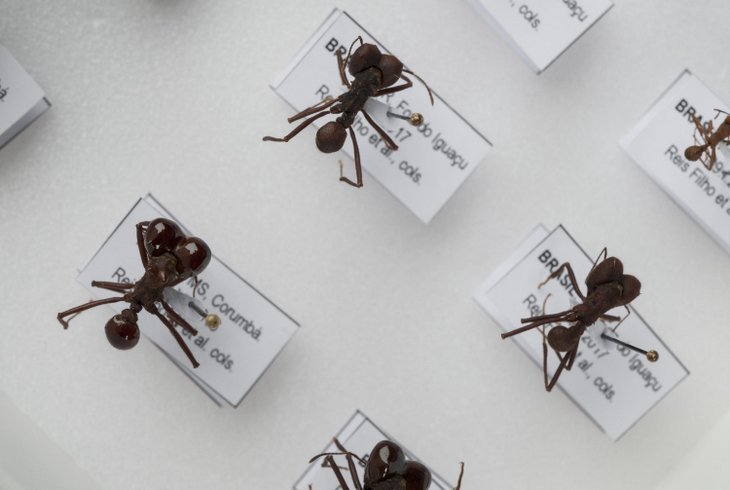Superbugs And Rockets Side By Side At Science Museum
Looks like this article is a bit old. Be aware that information may have changed since it was published.
Last Updated 21 November 2017

Will we ever get to the point where potentially fatal bacteria will become resistant to all our antibiotics? What is being done to prevent this healthcare apocalypse? Important questions about a massive medical issue that kills over 700,000 people a year, which could rise to 30 million by 2050. It's also the focus of a new free display at Science Museum looking at these superbugs.
We're greeted by inert versions of these bugs resembling a bacterial version of Interpol's most wanted — there's Gonorrhea, Streptococcus Pneumoniae, E. Coli and Staphylococcus Aureus, whose resistant version goes by the name MRSA and is a regular headline maker for how deadly it is.

We've met the diseases, but what about the potential cures?
This display has us covered with research to see if the way leafcutter ants harvest fungus could lead to the discovery of new antibiotics and the innovative research into bacteriophages — viruses that are adept at killing bacteria and present a potential alternative to antibiotics.

Hospitals are now using copper and silver in medical equipment such as stethoscopes, as these metals are know to be resistant to bacteria. A video features a doctor talking about one way to prevent resistance developing is to prescribe less and how the NHS is moving more towards this model. Two examples of how prevention may be the best cure.
The big elephant, or should that be cow, in the room when it comes to resistance is that 44% of antibiotics are used in farming, which is only compounding this global healthcare crisis. It's vital that farming stops over-using them and treating only the sick animals rather than all of them. Some of the innovations are very impressive such as a microphone that can detect the cough of a sickly piglet or a robot that can predict illness in a chicken by its gait — both these devices enable just the sick animals to be treated and drastically decrease the amount of antibiotic usage.

A second smaller display nearby looks back at the 60th anniversary of Skylark, a rocket programme designed at the height of the Cold War that went on to be used largely for scientific research. It's a programme we knew little about and the on board equipment on display looks very dated, though must have been state of the art at the time.
Interviews with the team behind it add some human stories to this very successful programme that launched a total of 441 missions. As it's a small display we suggest tying it in with a visit to Illuminating India, Superbugs or pop in if you happen to be in the Space section of the museum.
Superbugs: The Fight For Our Lives and Skylark: Britain's Pioneering Space Rocket are on display at Science Museum until Spring 2019. Both displays are free to view.
All images are copyright of the Trustees of the Science Museum.




